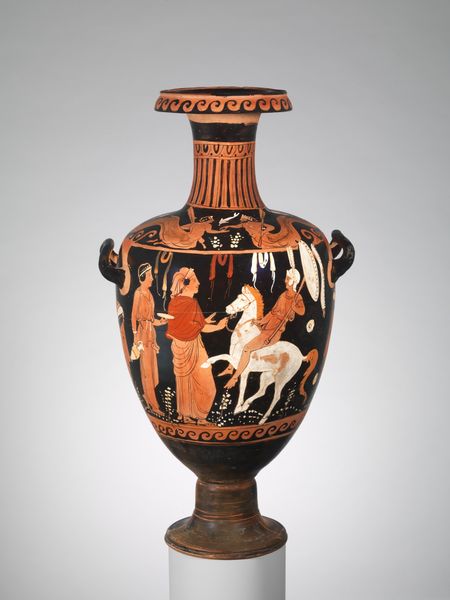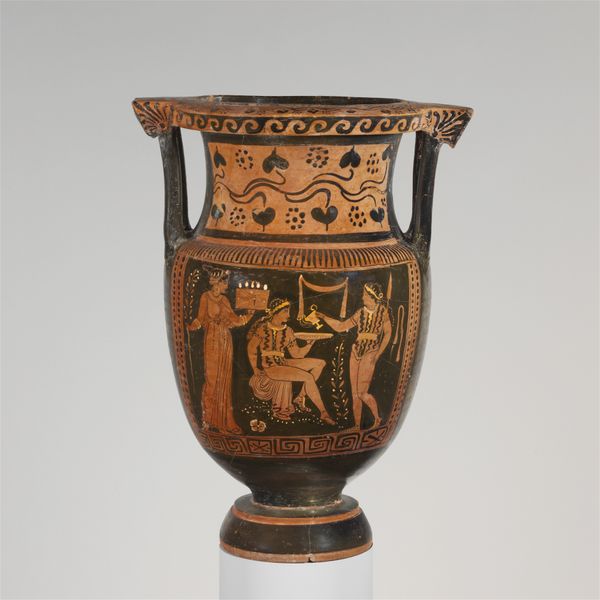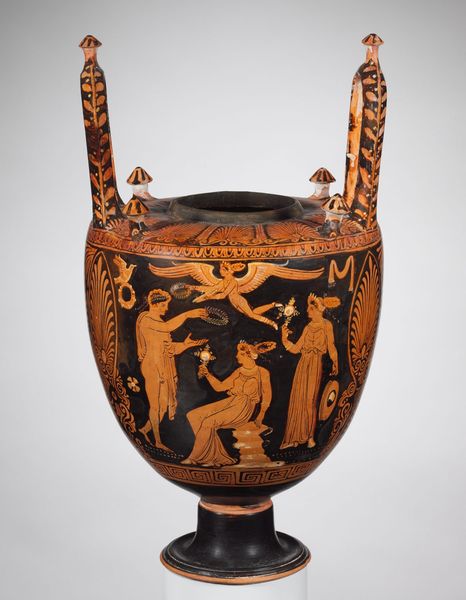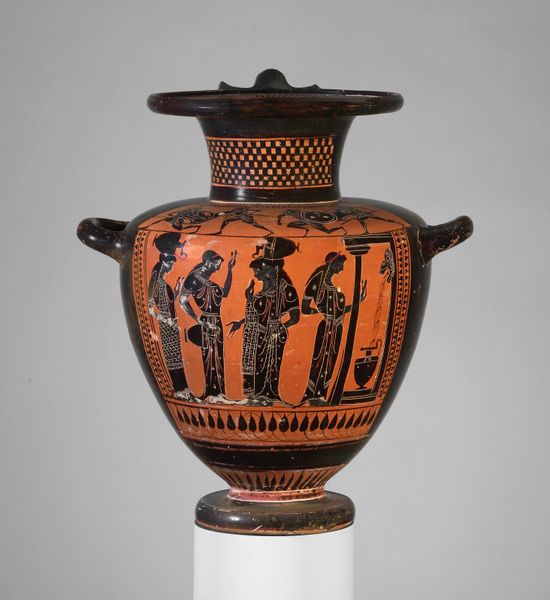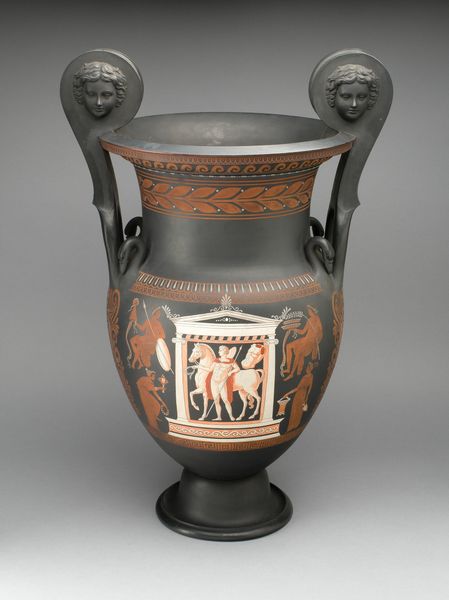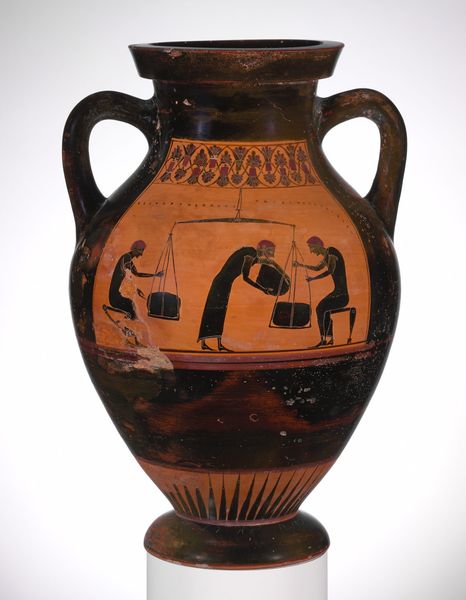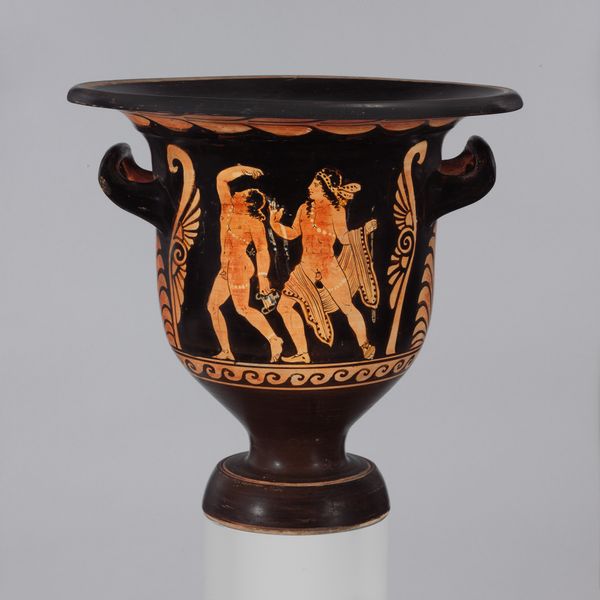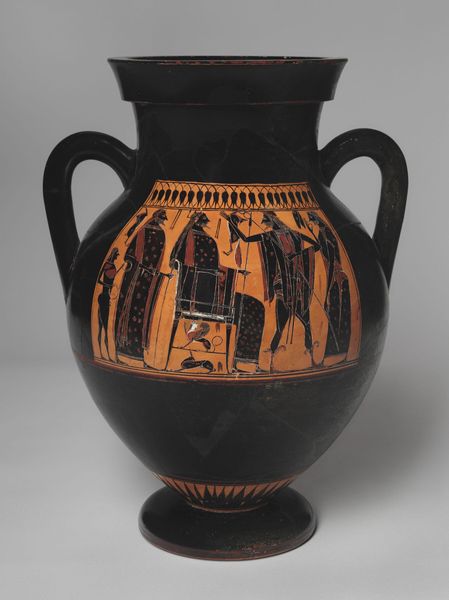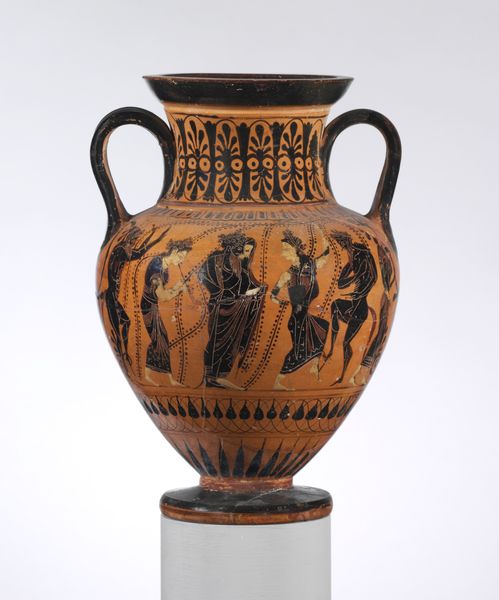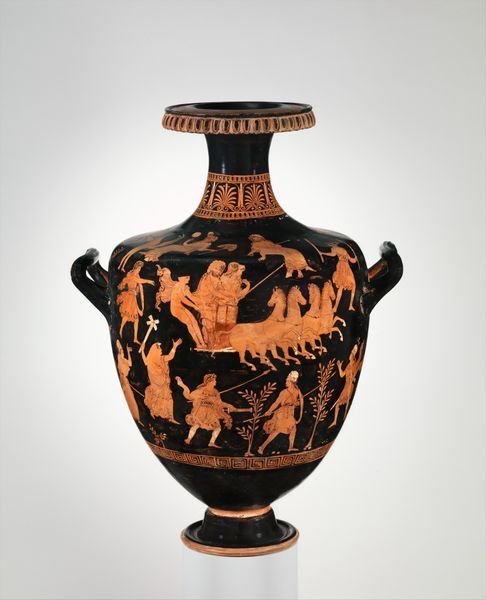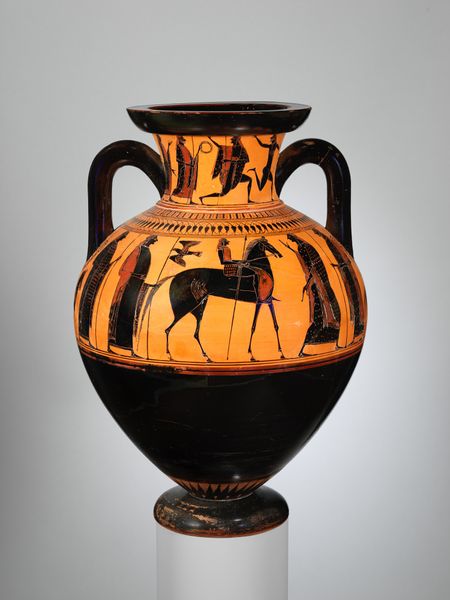
Terracotta Volute Krater (vase for Mixing Wine and Water) 310 BC
0:00
0:00
ceramic, earthenware
#
narrative-art
#
pottery
#
greek-and-roman-art
#
ceramic
#
figuration
#
earthenware
#
ancient-mediterranean
#
ceramic
#
earthenware
#
history-painting
Copyright: Public domain
This terracotta volute krater was crafted by ancient Greek potters as a vessel for mixing wine and water. Note the dynamic scenes of gods and mythical beings, rendered in the red-figure technique against a black background. Observe the prominent depiction of Dionysus, the god of wine, revelry, and theatre. He is often surrounded by his followers, the satyrs and maenads, symbols of ecstasy and liberation. This echoes through time, seen in Renaissance bacchanals and even in modern celebrations of Carnival, revealing an enduring human need for cathartic release. Consider the masks adorning the handles, evoking the god’s connection to the stage. Such masks transcend time, appearing in varied contexts from ancient Roman theatre to Venetian Carnival, where they act as a visual trope of transformation and disguise. These motifs reveal how collective memory and the subconscious mind shape the creation and interpretation of imagery. Such powerful symbols engage viewers on a deep, subconscious level, demonstrating a non-linear progression that is continually resurfacing and evolving through history.
Comments
No comments
Be the first to comment and join the conversation on the ultimate creative platform.
